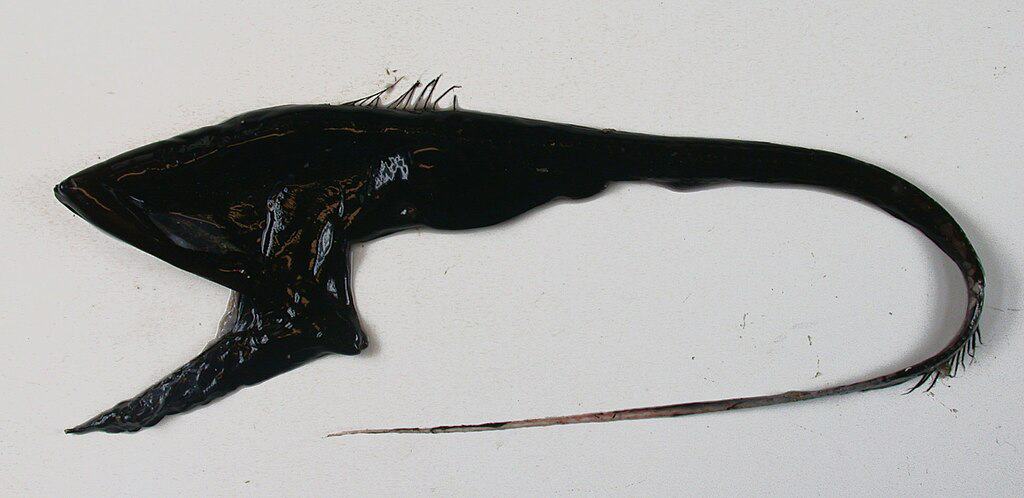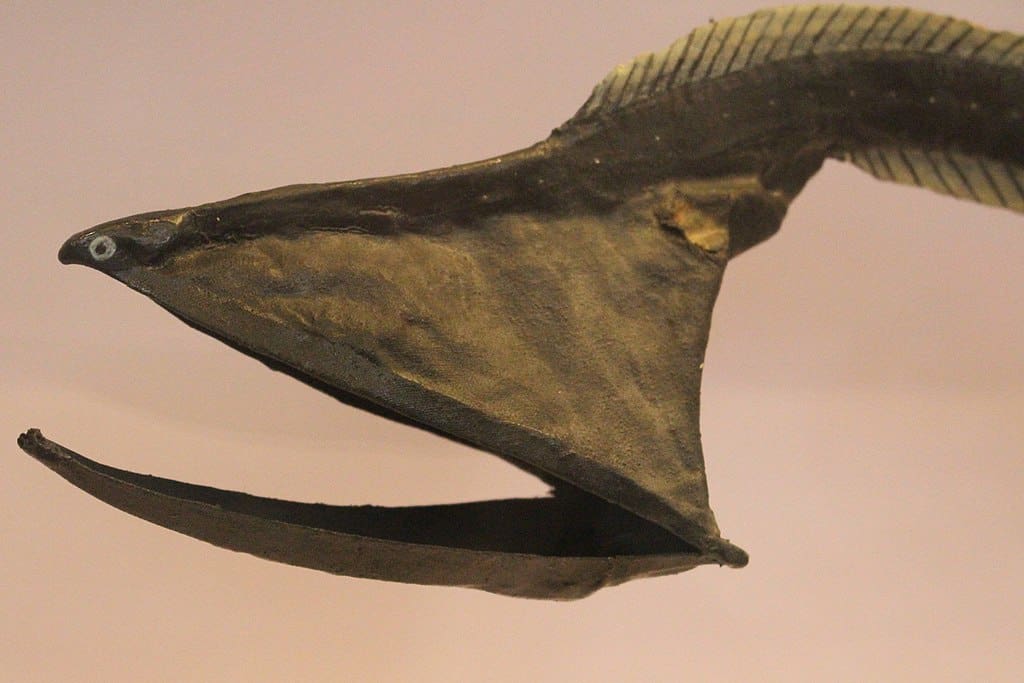Deep within the mysterious and largely unexplored depths of the ocean resides a fascinating creature known as the gulper eel. With its incredible adaptations and unusual appearance, this enigmatic species has captured the imagination of scientists and ocean enthusiasts alike. Also referred to as the pelican eel (Eurypharynx pelecanoides), this deep-sea dweller boasts a distinctive and almost otherworldly presence, making it a captivating subject for marine research.
Unveiling the Physiology

The gulper eel’s most striking feature is its enormous mouth, which accounts for much of its common name. This mouth is disproportionately large compared to its slender body and can open wide enough to swallow prey much larger than itself. Its jaw is capable of expanding like a pelican’s pouch, allowing it to engulf unsuspecting animals with ease. This unique adaptation is particularly useful in the deep sea, where food is scarce and opportunities for feeding are unpredictable.
Typically, the gulper eel measures between 60 and 80 centimeters in length, though its body is quite slender. This elongated form, coupled with its small, underdeveloped fins, suggests that it is not a powerful swimmer. Instead, it likely relies on its ability to gulp prey and its bioluminescent tail to lure and consume food effectively. The eel’s body is covered with a thin, almost translucent layer of skin, and it lacks scales entirely.
Deep-Sea Adaptations

Living at depths ranging from 500 to over 3,000 meters (1,600 to 9,800 feet) beneath the ocean’s surface, the gulper eel faces extreme environmental conditions. The pressure at these depths is immense, and sunlight is virtually non-existent, necessitating a suite of adaptations to survive in such an alien world.
One of the most fascinating adaptations of the gulper eel is its bioluminescent tail. The tip of its long and whip-like tail can emit a glowing light, which scientists believe is used to attract prey in the pitch-black waters of the deep sea. This luminous lure may draw in small fish and crustaceans, which the eel can then capture in its cavernous mouth.
Reproduction and Lifecycle

The reproductive behavior of gulper eels remains largely shrouded in mystery, primarily due to the inaccessibility of their natural habitat. However, it is believed that their lifecycle is similar to other deep-sea fish, characterized by a relatively short larval stage known as the leptocephalus phase. During this stage, the larvae resemble transparent ribbon-like forms that drift in the ocean currents, a strategy that helps distribute them over wide areas for feeding or settling to new habitats.
As they mature, gulper eels undergo significant morphological changes, eventually morphing into their adult forms with the distinctive large mouths and bioluminescent capabilities. Scientists assume that adults spawn once and then die shortly thereafter, though this hypothesis requires further study for confirmation.
Challenges of Studying Deep-Sea Species

The depths of the ocean represent one of Earth’s final frontiers, posing significant challenges that have limited the scientific understanding of species like the gulper eel. Remotely operated vehicles (ROVs) and deep-sea submersibles have allowed scientists to explore these underwater realms, but the data they gather can be sparse due to the sheer vastness and extreme conditions of these environments.
Despite these challenges, technologies are evolving, helping to shed light on organisms dwelling in the abyss. Through improved imaging and data collection techniques, researchers hope to uncover more details about the gulper eel’s behavior, reproductive habits, and ecological role in the deep-sea ecosystem.
Conclusion: The Gulper Eel’s Role in Marine Understanding

The gulper eel stands as a beacon of the mysteries lying beneath the ocean waves. Its unique adaptations and elusive nature highlight both the wonders and challenges of deep-sea exploration. By continuing to study such enigmatic creatures, scientists can glean insights into the resilience and diversity of life on Earth, enhancing our understanding of marine ecosystems and the evolutionary processes that shape life in the most extreme environments.
- Why Some Snakes Have More Potent Venom Than Others - August 15, 2025
- 12 Reptiles That Can Live Over 100 Years - August 15, 2025
- Discover The 5 Best Dog Breeds for Snake Control in New York - August 15, 2025

